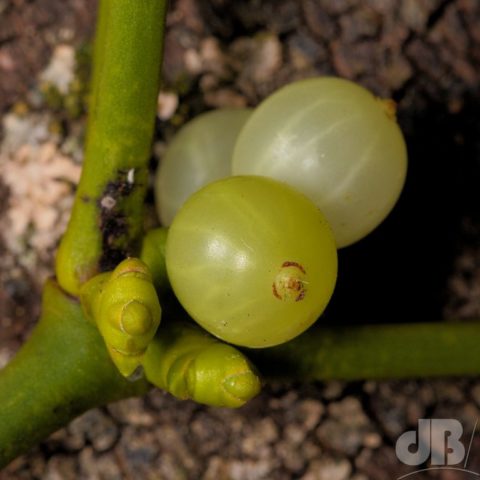UPDATE: I think I had misremembered a nature documentary concerning how mistletoe seeds are distributed, it’s via beak not bottom, apparently. Maybe there is another parasite that requires transit through the avian digestive tract to activate it prior to germination, but seemingly not so the mistletoe seed.
Kiss and tell news just in. For the first time in more than two decades at our home, we finally have a female in our rowan tree, having had a male parasite hanging around for years.

The scientific name – Viscum album – basically means “sticky white”. Birds such as blackbirds and thrushes eat the sticky white berries. They get nutrition from the flesh, but chemicals and undigested sticky berry flesh causes them irritation on the way out, which gives them the urge to scratch their cloaca against the bark of a tree to remove the irritation. Flesh and seed are then transferred from bird to bark where it sticks and gives the seed the opportunity to germinate and parasitise the tree. A new mistletoe will then later produce berries of its own that a future generation of birds will take.
Traditionally, a sprig of mistletoe is hung over the door to a house at Christmas. A visitor will pluck a berry and receive a kiss from the host or hostess for their efforts. Mistletoe is rather toxic, so the berries should not be eaten by people nor left for a pet to eat. Interestingly, the toxic natural products have been the focus of much research over the years for potential physiological activity which might be used to develop novel pharmaceuticals for various illnesses. It’s a topic, I’ve written about at this time of year several times in my thirty-plus years as a science writer.
#mistletoe #getafix #asterix #parasite #poisonous #botany
Don’t worry I’m not going to do any covers of Cliff songs…